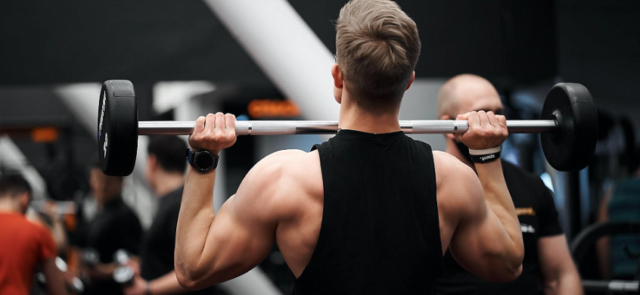ARMY BENCH PRESS: TECHNIQUE, TYPES, BLUNDERS

The following muscles are actively working in the military press:
- deltoid;
- large chest;
- triceps muscles of the shoulder;
- anterior dentate;
- supraspinatus muscle.
There are several options for the military press: with a barbell and dumbbells, sitting and standing. Choose a technique depending on the purpose.
- Strength growth. In this case, you can work with both shells, but you can take more weight while standing than sitting.
- Working deltas. 2014 study showed that the vertical dumbbell press is the best exercise to load the anterior bundle of the deltoid muscle.
- Increased tone and increased muscle mass. More muscles are involved when the bench press is standing.
- Reducing the load on the spine. The sitting position helps to take some of the load off the spine. The type of projectile doesn’t matter.
Press from behind the head – a more traumatic exercise, requires high elasticity of the muscles of the chest and shoulders. Such a movement is rarely used in everyday life, it is less characteristic of the joints, and the range of motion is less than when working from the chest.
Standing with a barbell
At the beginning of the exercise, the bar should be placed on racks at shoulder level, so it will be more convenient for you to remove it. To remove, grab the bar, put one foot forward, squat slightly and lift the barbell, then take a side step back, stepping out of the rack.
Hold the bar with a medium (shoulder-width) straight closed grip, lower it to chest level and check that it rests on the center of the palms. The legs should be parallel to each other, the forearms should be perpendicular to the floor throughout the exercise.
Squeeze the bar as you exhale: the movement of the hands should not be strictly vertical, but slightly in an arc. At the peak, the arms are straightened, the head looks forward. Then slowly lower the bar to chest level. During the push, do not help with your legs, the top should work.